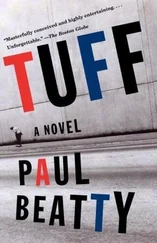Lars ejected the tape and flipped it around, looking for clues as to where it came from. He was too much of an ethical journalist to ask me to divulge my sources. Not that I had any.
“It came in the mail.”
I handed him the envelope the chicken-fucking song had come in, making sure he noticed the return address and the East Berlin postmark. He held it gently, as if it were an old museum piece. “Wow, it feels good to know that Charles Stone might be out there.”
“There” meant the 350 square miles of divided Berlin expanse that existed in Lars’s head. From my window, “there” was the oak-tree-lined intersection of Schlüterstrasse and Mommenstrasse, an overpriced Italian restaurant, a furrier, and, almost directly underneath us, two stories down, Blixa Bargeld, the infamous leader of the industrial band Einstürzende Neubauten, sitting on the fender of his sports car. Dressed head to toe in Berlin black, his legs crossed at the ankles, he’d take a long pull on his cigarette, hack into his fingerless leather glove, then crane his neck down the block. He too was waiting for somebody to come out of the growing darkness.
“That’s dusk you feel,” I said to Lars.
“No, it’s more than that,” he replied. “This city, this country has been dead for a long, long time, and if somebody like Charles Stone is out there somewhere, it means the cultural soil is no longer fallow. Picasso blossomed in Paris and the city flowered along with him. Gauguin in Tahiti. Kerouac in Mexico. Erich von Stroheim in Hollywood. DJ Darky and Charles Stone in Berlin.”
“The Schwa — back home we call him the Schwa.”
A flat-chested Chinese woman who played up her exotic communist appeal and downplayed her beauty with an X-Acto-knife-sharp bowl cut, kung fu slippers, square plastic Jiang Zemin glasses, a Red Army jacket with matching floppy Long March hat, and a bootleg Dead Boys concert T-shirt sidled up to Blixa and without asking coyly shared his cigarette.
“We haven’t had a great thinker since Heidegger, a great artist since Riefenstahl. Don’t get me wrong, you’re a great fucking DJ, but DJs aren’t artists or thinkers. They can’t be Picasso or Kerouac. But they can be one of those thankless unknowns that came before them. Influenced them. Threatened them. Fed them. Maybe you’re Dean Moriarty, Alice B. Toklas, Fab Five Freddy, or Allen Ginsberg’s ‘negro streets at dawn.’ ”
I watched Blixa and his girlfriend kiss, and with every vicarious grope I cared less and less about the Schwa and my perfect beat. I’d rather look for love, but blind, crippled, and crazy, I’d slept with damn near every woman in West Berlin, so I was running out of options.
On our way to the Slumberland we walked past the intertwined Blixa and his Red Guard. He stopped nuzzling his Sinosylph long enough to stare me down. He’d heard the beat. It had fallen from my window and landed on his head like a Newtonian apple. The curious rhythm bruising his auditory cortex and, I suppose, his ego. Still ringing fuzzily inside his head. Just as Sir Isaac knew the laws of gravity couldn’t be ignored when the apple struck him, Blixa instinctively knew that the George Clintonian Law of Universal Funk must also be paid obeisance. For every funky object in the universe attracts every other hip-hi-de-ho object with a soulsonic force directed along the bass line of centers for the two objects that is proportional to the product of the masses of their asses and inversely proportional to the bustin’ out of L7 square of the racial separation between the two objects.

where: F is the Funk, G is the Groove constant, m 1 is the mass of the first ass, m 2 is the mass of the second ass, and r is the great racial divide.
We left Blixa to his own calculations, and four hours later it was hubris hour at the Slumberland, Lars’s proud face beaming at the new multiculti Germany around him and still pontificating on the coming rebirth of both his city and the black man.
“Think about it, fifty years ago we tried to kill culture, and now without trying we’re going to resurrect it.”
In the middle of the bar a Watusi climbed on a table and danced the Watusi. I thanked the gods there were no tribes called the Mashed Potato, the Electric Slide, or the Funky Chicken. West Berlin, Lars drunkenly insisted, would prove to be the modern-day equivalent to the Olduvai Gorge. It would be the birthplace of the neo-protohuman, the new black man.
There was one sitting across the table from me. A premature protohuman baby with whom Lars and Doris had periodic threesomes named Tyrus Maverick. Tyrus was a self-described “performance artist slash poet slash playwright slash filmmaker slash activist” and, as I liked to add, “slash asshole” who still owes me three hundred dollars. He hailed from Southern California, claiming Compton though he’d spent the greater part of his boyhood in Hawthorne. He’d tried to pal up citing our common Sureño palm tree and In-N-Out burger vato loco heritage, and I was friendly at first until I went to a reading of his play Iceland Is Hot! *
Tyrus had the annoying habit of tapping me on the arm whenever he had something to say. “Hey, man”— tap, tap —“I think Doris still likes you. She’s always carrying on about how you the only black man she’d ever known who during a dinner date didn’t insist on sitting in the seat facing the door like a wanted criminal.”
Tyrus was good for one thing, though: He kept up with contemporary African-American male literature. That night he was reading a trade-paperback tome entitled Want Some, Get Some. Bad Enough, Take Some . Like everything else he read, it invariably bore a series of blurbs comparing the author’s biting satire to Ralph Ellison and Richard Wright, a comparison that I never understood because Richard Wright isn’t funny.
“Can I borrow that when you’re finished? I’d like to read it.”
“No doubt. This cat’s a hell of a writer. Damn near as funny as Richard Wright.”
I loved reading these books. The black tweed-jacketed eruditeness mixed with street-corner irreverence, the honesty about racial turpitude coupled with the dishonesty about its manifestation. Like the authors, the protagonists are always brilliant, underappreciated men in search of white approval and, therefore, self-affirmation. I know these cats. These are the dudes from the neighborhood who got white-boy SAT scores, attended small Midwestern liberal arts colleges, and married frumpy white girls with hairy legs who douche with rainwater. Yet the female love interest who grounds their protagonists to their fragile blackness while they trek through the absurdist, mine-laden landscape that is America is always a demure, brown-skinned female with a refined intelligence, no personality, and no problems, the kind of woman guys like the ones who inhabit these novels would never be attracted to. I needed a real woman exactly like the fictional ones that always showed up in Part III of those novels. Where was my Melba? My Wanda? My African queen without the African features?
When I looked up from my musing, a full-chested, auburn-haired woman splattered with freckles from her cheekbones to her clavicle was seated at our table, jingling her car keys in my face. Lars slipped his pompous-looking mug over her shoulder and raised an eyebrow. Doris’s bumptious face suddenly appeared over the other shoulder. Together they looked like a smug, three-headed Aryan hydra.
“I know you’re thinking about giving up looking for the Schwa,” Doris said. “Don’t.”
The middle head smiled broadly, licked her lips, and this time jangled her keys so that the BMW logo on her rubber-tipped ignition key was prominently displayed.
Читать дальше













